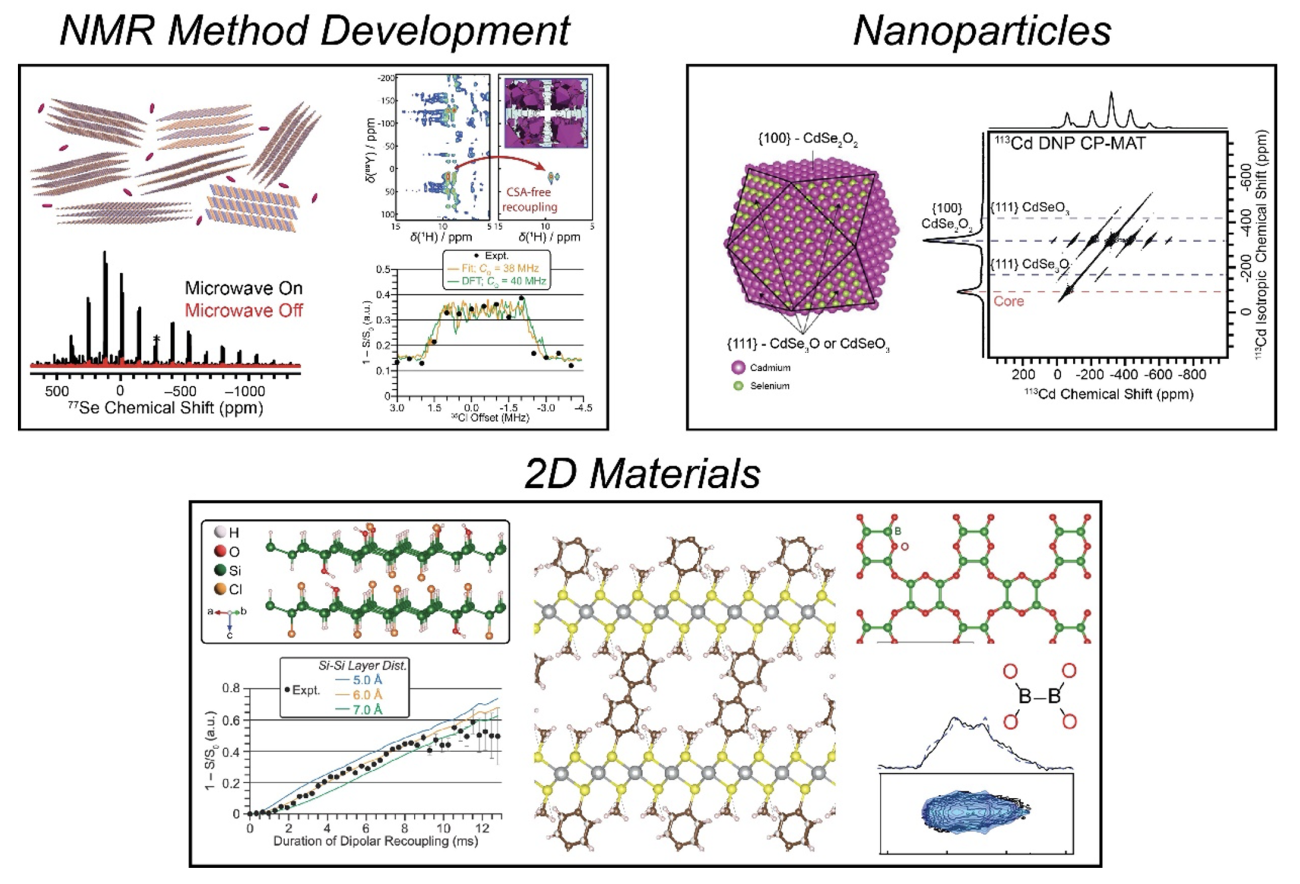
The purpose of Ames National Laboratory’s materials solid-state nuclear magnetic resonance spectroscopy (SSNMR) program is to advance the science of semiconductor nanoparticles and atomically thin 2D materials that can fulfill needs related to microelectronics, energy storage/conversion, quantum information, sensing, and separations/purifications. The overarching hypothesis of our proposed work is that the properties of emerging semiconductor nanoparticles and 2D materials depend upon as-of-yet unknown, atomic-scale features. We hypothesize that these features can be elucidated by using sensitivity-enhanced SSNMR spectroscopy to determine molecular structures of these materials. Further, structure determination by NMR will aid the design and synthesis of new materials. We will test these hypotheses through three aims:
- We will exploit sensitivity-enhancement methods to enable 2D SSNMR experiments that measure atomic connectivity and inter-atomic distances. We will develop NMR methods that enable determination of bond angles/relative orientations of functional groups and provide the nano-scale ordering of materials.
- We will apply NMR-based approaches to determine the structure of the surface and interfaces of semiconductor nanoparticles and relate them to photophysical properties. We will develop approaches to measure the geometry and binding sites of carboxylate ligands via 17O SSNMR spectroscopy, determine the protonation states and binding sites of amine ligands, and probe the extent of alloying in graded core-shell structured nanoparticles.
- We will determine the molecular structures of 2D materials including metal-organic semiconductors (MOS), boron monoxide, and stannane-germanane. We will also synthesize novel MOS materials that feature porosity and controlled ordering of metal-chalcogenide layers.
Project Members:
Principal Investigator: Aaron Rossini
Co-PIs: Rana Biswas, Wenyu Huang, Takeshi Kobayashi, Fred Perras, Javier Vela-Becerra
